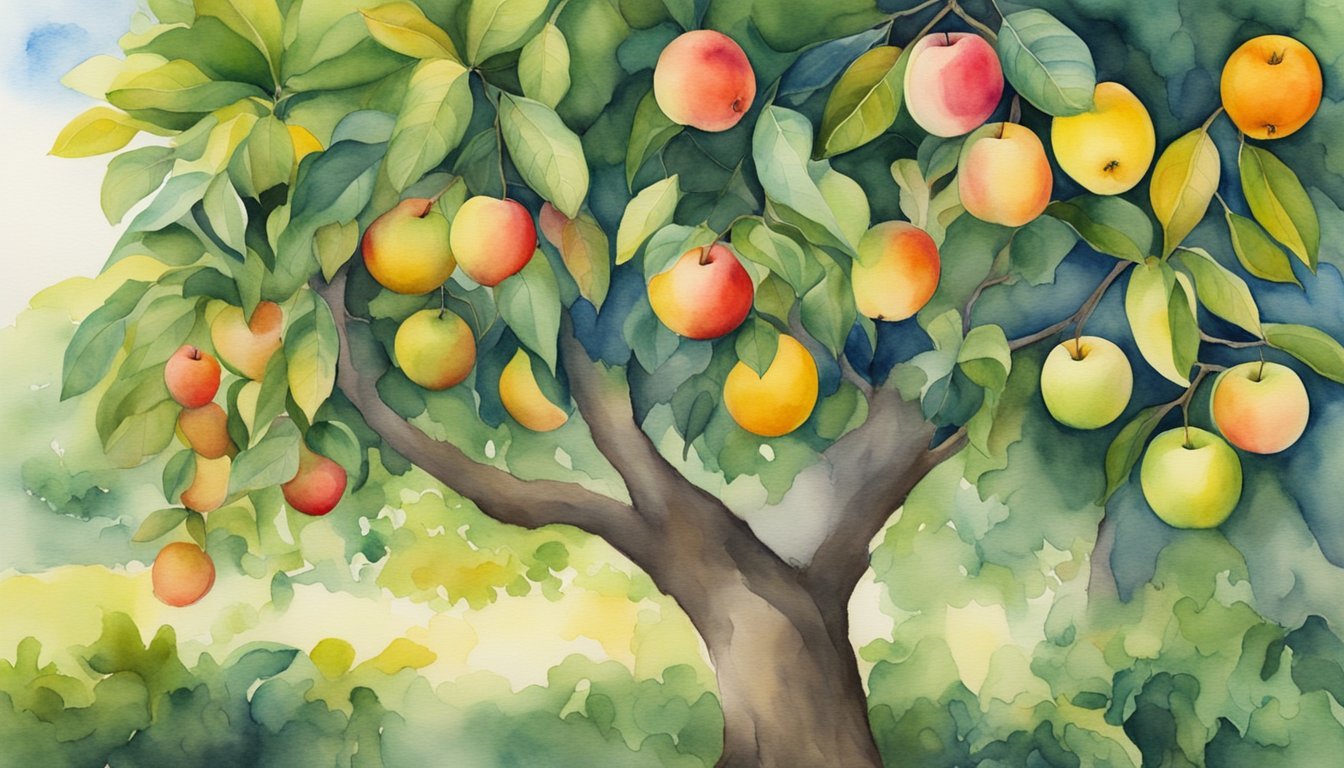Concept and Creation of the Tree of 40 Fruits
The Tree of 40 Fruits is a singular and innovative art project that combines horticultural finesse with a deep cultural message. Behind its charming facade of blossoms and bounty lies a story of artistic vision and complex botanical expertise.
Inspiration and Artist Background
Sam Van Aken, an artist and professor at Syracuse University’s College of Visual and Performing Arts, embarked on the development of the Tree of 40 Fruits with both an artistic and educational mission. Born from the chambers of the Comstock Art Facility, this project served as a living testament to the possibilities of grafting and an exploration of New York State’s agricultural history. Van Aken, a contemporary artist with a knack for intertwining nature with art, intended for the tree to be a conversation starter on cultural diversity and shared community.
Grafting Techniques and Botanical Challenges
The method used to create this unique tree is grafting, a sophisticated horticultural technique whereby tissues from one plant are inserted into those of another so that the two sets of vascular tissues may join together. Every tree of 40 fruit begins with a root stock, often from dwarf stock trees preferred by commercial growers for their size. The intricate process involves meticulously grafting buds from various stone fruit species onto this root stock, continually managing growth and compatibility. Challenges are myriad, from ensuring that each grafted bud successfully takes to performing the delicate surgery that grafting effectively is.
Cultural and Social Significance
The Tree of 40 Fruit is more than just a botanical feat; it stands as a sculptural work that aims to create, preserve, and promote a conversation around biodiversity, agriculture, and the environment within communities. Installed in locations such as the Everson Museum of Art, the trees operate as both a living archive of heirloom stone fruit varieties—many of which might otherwise become obscure—and a metaphor for accommodating diverse cultures in the United States. They become focal points for discussions about food science, agricultural history, and community development, showcasing how a single tree can embody a multitude of narratives—a symbol of unity in diversity.
Species and Locations

The Tree of 40 Fruit is an innovative horticultural creation, featuring a plethora of stone fruit varieties grafted onto a single tree. These trees stand as both artworks and functional fruit producers.
Varieties and Their Origins
The Tree of 40 Fruit predominantly grows stone fruits from the genus Prunus, which includes peaches, plums, apricots, nectarines, cherries, and almonds. The origin of these varieties is varied, with many tracing their lineage back to different regions of Asia. Peaches and nectarines, for instance, originally hail from China, while apricots have Central Asia origins. Almonds, too, have their roots in parts of Central and Southwest Asia.
Geographic Spread and Growth
These multicrafted trees have a growing presence across the United States. Notably, they are part of a project conceived by an artist and professor at Syracuse University, which has led to the planting of these trees in locations such as the New York State Agricultural Experiment Station, Bentonville, Arkansas, and Central New York. Other states that feature these unique trees include California and Oregon, with demonstrations and educational programs happening in Portland. The idea is spreading, with the trees serving as living art installations that also foster agricultural and botanical awareness.
For more detailed information, readers can visit pages that delve into the Tree of 40 Fruit project and its widespread impact in locations like Bentonville, Arkansas.

